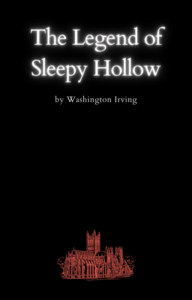For various reasons, I wanted to design a vehicle for LotS that would be able to move without any fuel, only gravity and some kinesthetic logic— like a strandbeest. Below, I have a quick sketch of the vehicle’s chassis. I neglected to draw the “legs” because I still don’t understand the mechanisms enough to feel confident sketching anything that didn’t further convolute the visual. Just imagine two massive clouds of numerous bamboo joints tied by the red “knot” on either side of the chassis.

To suit the setting of LotS, most if not all of the vehicle’s components should be made of plants (bamboo, pandan/banana leaves, fibers) and be light enough for a small team of adults to lift on their own. The shade/roof of the vehicle should be much more tapered than as drawn with slits going down to the snout so as to prevent lift (these vehicles should not go airborne, nor should they rely on wind for travel) depending on how tall the vehicle is for the sake of the inner mechanism. These should be able to seat at least 50 people at a time. The stakes should be retractable just like the front wheels of an airplane, and rest directly under the pedal platform so as to prevent it from ever completely touching the ground.
The only parts that would ever touch the ground should be the legs and the stakes. The immobile platform is fixed and should always keep a certain amount of distance from the ground. The pedal platform, on the other hand, should be capable of moving up and down a cable (represented by the red lines) that are fed through the vehicle’s structure so as to avoid tangling and accidents. This cable(1), triggered by the pedal platform, will be responsible for starting or pausing the mechanism of the legs depending on how much weight/how much stress is generated. When the pedal is down, the beest starts. When the pedal is up, the beest stops.
The shade of the vehicle is to, of course, provide shade for its occupants, but also to provide a frame for rigging the cable(2) so that the pedal platform may be lifted upon emergency by a small team on the immobile platform. This team shall serve as the vehicle’s “drivers” and oversee operations. Speaking of the immobile platform, I should expect that that platform may also be used to carry luggage, as weight on that area will not trigger the cables and set off the beest prematurely. Naturally, the place where passengers rest will be on the pedal platform, as they will be the main source of power for the vehicle (that is, their combined weight). To slow the departure of the beest, the overseeing team may use the cable rigging(2) to prevent the triggering of the legs, but the whole operation of seating the passengers must be done swiftly and orderly to prevent accidents.
The drawing provided is a sketch of the vehicle while it is not engaged: the immobile platform and the pedal platform should be almost level, with the pedal platform slightly lower for ease of entering. Because of the cable’s function, the pedal platform is raised when at rest, and the legs of the vehicle cannot move. Only when the pedal platform exceeds a certain weight will the cables be tight(?) enough to trigger movement. This trigger, I imagine, is at once done by the tightening of the cables so that a key piece of the legs is agitated or inserted, but this may also be counteracted by the cable rigging(2) above the immobile platform, in which the cable is tugged inversely(?) and prevented from fully activating the mechanism. Of course, for that to be possible, the drivers would have to achieve a certain amount of strength or technique to counteract the weight of 50 people, but the settings of LotS do make this a true possibility. Thank you, fantasy.
As mentioned before, the vehicle is constructed of plant materials, but mainly bamboo. This makes the vehicle strong, flexible, waterproof, fireproof, and easily repairable. I should imagine that the sparser foliage of a jungle would be bypassable if maintained by the vehicle’s constant use. Should the legs be capable of cutting the foliage down as well? I don’t think that there is enough power generated by this mechanism to do so, but it couldn’t hurt to have some blades on the key parts of the legs, but then, I can’t imagine where exactly they’d be. After all, the point is not to destroy a path, but to rove over the land and transport large parties and their luggage in more rural areas.
Yes, here comes my biggest concern of this imaginative piece: would this vehicle be suitable for climbing a shallow mountain? Or a region full of jungles? I expect it to be a slow, continuous movement that is only used as public transportation, and rarely private. For in Aren, everywhere that one may want or need to go is within walking distance. Aren has villages for cities and sparse towns for villages. Its abundant resources curb its aboriginals from greed and instead encourages a druidic lifestyle where one’s life is inextricable from the natural scenery of their home. Maintaining these rough paths between cities for the sake of communication and trade was all that this vehicle was originally going to fulfill. Now that there are tourists and a rising demand for certain goods, I may have to write about the shortcomings of such a vehicle to invoke conflict in LotS, but I think that such a slow and steady vehicle is quite suitable for Aren, as it also reminds me of the honest carabao.
Now, I just have to practice describing such a vehicle. I should probably start with a name for it, no? That’s too difficult. I wonder if I’ll be able to simply call it “beest”, since it is a strandbeest at its core. I’ll have to think on that.
But then, I’ve shared a little of what I think about in order to feel fulfilled as an author. For this sort of detail, I’m not sure if it will show up at all in the story, but when I draw visual adaptations of certain scenes, I’ll at least have this bit of writing to refer back to.







Anarchism and Other Essays
Completed